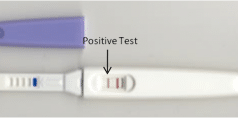
This article was developed via a partnership with BetterHelp.
Dissociative Identity Disorder, also known as DID (and incorrectly referred to as ‘multiple personality disorder’), is a mental health condition caused by repeated and severe trauma during childhood. It is one of the several dissociative disorders that someone can develop, and it is accompanied by amnesia.
DID is still being studied by psychologists, and some psychologists even doubt its existence. However, trauma processing, EMDR, and family systems therapies are shown to help patients manage this condition.
Since DID is one of the most debated mental health conditions in the world, we thought we’d explain what psychologists think about how this condition develops and how to know if you have it. If you do, we’ve also offered some ways to find help.
The Developmental Years: Developing DID
Dissociative identity disorder is widely accepted as a disorder that develops during the most important developmental years of a person’s childhood. These years are around one to nine years of age. Some psychologists expand or decrease this timeframe, depending on their studies and opinions.
However, most psychologists agree that a child cannot develop DID as a full-blown mental health condition after nine years of age. Therefore, trauma experienced after the age of nine is usually not included in studies.
However, psychologists are still discussing the severity of the trauma that “counts” towards this diagnosis. We see more and more that children have varying degrees of tolerance to certain traumas. For one child, a divorce can be extremely traumatizing. For another, repeated assaults are a traumatizing factor in their upbringing.
DID develops by giving a child a way to escape and dissociate during repeated trauma. They develop other “personalities” that can come out and take over “the body.” This process essentially means that the child goes into a dissociative or amnesic state. In this state, they can’t remember what they have said or done, and they may act differently, acting as if they are another person entirely.
Many patients with DID will have a protective personality that is often older and appears in more traumatizing or scary situations. They may also have personalities that seem younger than their actual age or have difficulty speaking. The purpose of this is to protect the child in some way, whether that’s taking away traumatic memories or dissociating during abuse.
Recent studies show that DID is simply a severe form of PTSD, which means it forms in the same way as this similar condition. That’s why one child with trauma may develop PTSD, and another may develop DID. The children simply have different tolerance levels and are complex and unique individuals. Not every child will develop DID, and not every child will develop PTSD when exposed to trauma. However, PTSD is more common, especially in older children and teens.
Who Can Develop DID?
Any person of any background can develop DID as a result of trauma. However, they cannot develop it after the years of 1-9, and they certainly can’t develop it without any history of trauma or as an adult.
However, many people do not receive care or a diagnosis until they are an adult, as DID often goes unnoticed or is misdiagnosed for years. Since the person with this condition will not know when they “switch” personalities, they likely won’t seek treatment without a prompt from someone in their life telling them what they’re missing.
Unfortunately, a recent uptick in media coverage about DID has caused many young people to diagnose themselves with the condition, even though it is rare and unusual. It’s important for a psychologist to tread lightly when diagnosing this condition, knowing the access to information that many impressionable people may have.
Can Non-Childhood Trauma Cause DID?
If you experienced trauma outside of childhood, can you develop DID? The answer is no.
However, you can develop similar conditions like OSDD (other-specified dissociative disorder), which is a condition similar to DID that can develop at any age. However, with this condition, there is often little “amnesia” when going into a dissociative state, and “personalities” may be more blended with the “host.”
There are other dissociative disorders as well, and PTSD can have dissociative symptoms. It’s important to seek the opinion of a trained neuropsychologist or psychiatrist for testing when looking for a diagnosis.
How To Know if I Have DID?
If you are experiencing the symptoms of DID and did experience severe trauma in your formative years, or you suspect you did and can’t remember, you’ll want to speak to a psychologist.
DID can’t be self-diagnosed and requires an in-depth look at your past and your current symptoms. It may require observation as well. Some of the most common symptoms of this condition include:
- Spacing out often in the middle of a conversation
- Missing large periods of your life (full days or weeks)
- Being told by others that you “act like a different person” at different times
- Being told that you act like a baby or child sometimes
- Extreme difficulty with triggers and trauma memories
- Experiencing dissociation, derealization, and depersonalization daily
These are not the only symptoms, nor are they in clinical terms. However, if you are experiencing these symptoms, you’re likely experiencing dissociation. It’s a good idea to speak to a professional to figure out the cause.
How To Treat DID in the 2020s
As DID becomes more understood in the medical industry, there are more treatments available. Some trauma therapists are offering specific DID-informed trauma therapies, such as family systems and attachment work.
If you have been diagnosed with DID, the best place to start looking for help is by searching for psychologists with experience in your condition. Always look for someone who believes in the existence of your condition and is willing to work with you in the direction you want to go.
Some psychologists believe that it can be cured, while others believe it can be simply managed. Figure out your goals for your condition and the symptoms you experience and discuss these with your therapist.
Conclusion
Knowing how DID develops in children is important in learning how to treat it or how to get help. If you want to learn more about childhood and childhood trauma, check out BetterHelp today for more mental health information that’s up-to-date and expert-researched.








